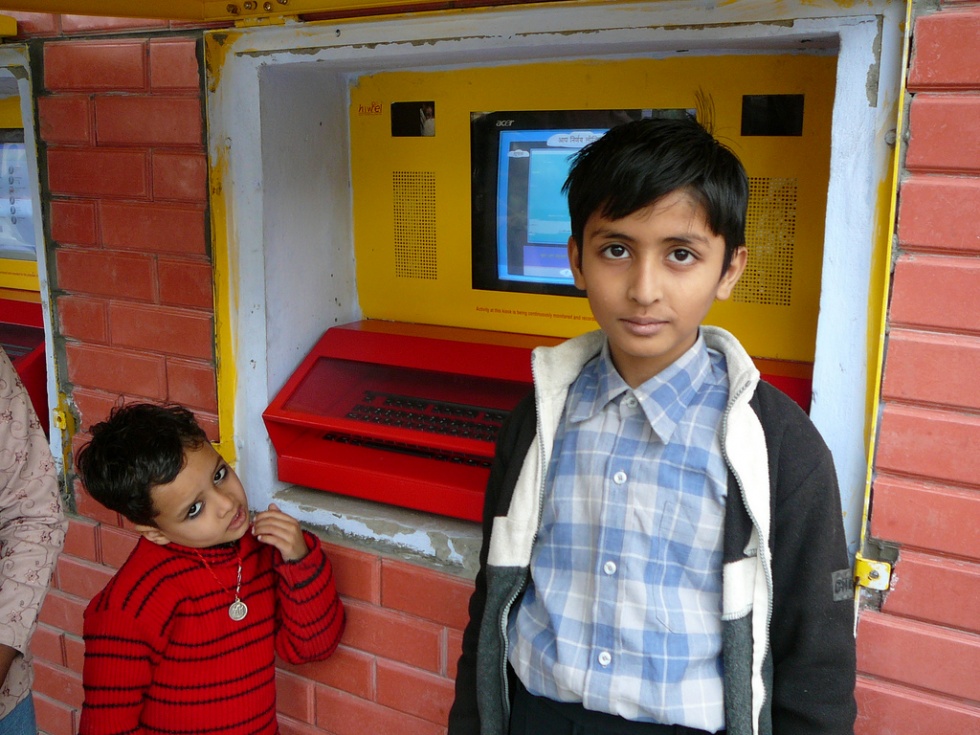I recently wrote a small piece on the controversial ‘Hole in the wall’ project for a UK-based magazine called Green Futures. Controversial, because of endless questions about its relevance in a country where primary education rates are dismal, and sustainability over time and place. And even more so, now that Sugata Mitra has won the 2013 TED Prize for the project – lots of outrage out there on the www.
My own take on this is that our structured education system stifles all curiosity and left to themselves, children are capable of learning a lot. That being said, it is no substitute to formal education; it is, at best a supplement.
Here is my original piece – an edited version appeared here…
***

(pic courtesy: Green Futures)
It was a hole in the wall. Literally. In 1996, Sugata Mitra, then Chief Scientist of NIIT (National Institute of Information Technology), created a niche in the wall at his Kalkaji campus in New Delhi and placed a computer.
It was a Windows PC working on a Pentium processor with 64 mb of RAM and connected to NIIT’s internal PC network. Only the monitor was visible from the outside through a glass window and a touch pad was built into the wall.
Mitra’s idea was to lure children from the nearby slums to explore and learn on their own. And not to his surprise, they did.
Belying severe criticism, 14 years on, the Hole has grown to over 500 computers in different parts of the country. The project has also been replicated successfully in countries like Cambodia and South Africa. In India, it was initially and is still funded by the NIIT Foundation.
Apart from being able to browse the internet, children can also play educational games suited to their age. The project team has been analysing the data collected on the devices and over cameras installed at the locations.
Viraal Balsari, India Co-Director, Forum for the Future says, “It’s a good on the spot innovation, but for long term impact, such learning has to be dovetailed with access to primary education.”
Mitra’s argument, validated over the years, is that learning happens best when it feels like play. The experiment works because it capitalises on the innate curiosity and enquiring nature of young minds, a necessary precursor for future innovation. And the hope is that children who learn through unconventional methods will in turn create exceptional products and solutions.
Finally, this is not a school that children have to be forced to go to. Indeed, newspaper reports in India say that parents find it tough to tear their kids away from it.
A vocal proponent of “minimally invasive education,” Mitra was awarded the TED Prize of $1 million earlier this year. His plan for the future is to build cloud schools “where children can embark on intellectual adventures by engaging and connecting with information and mentoring online.”